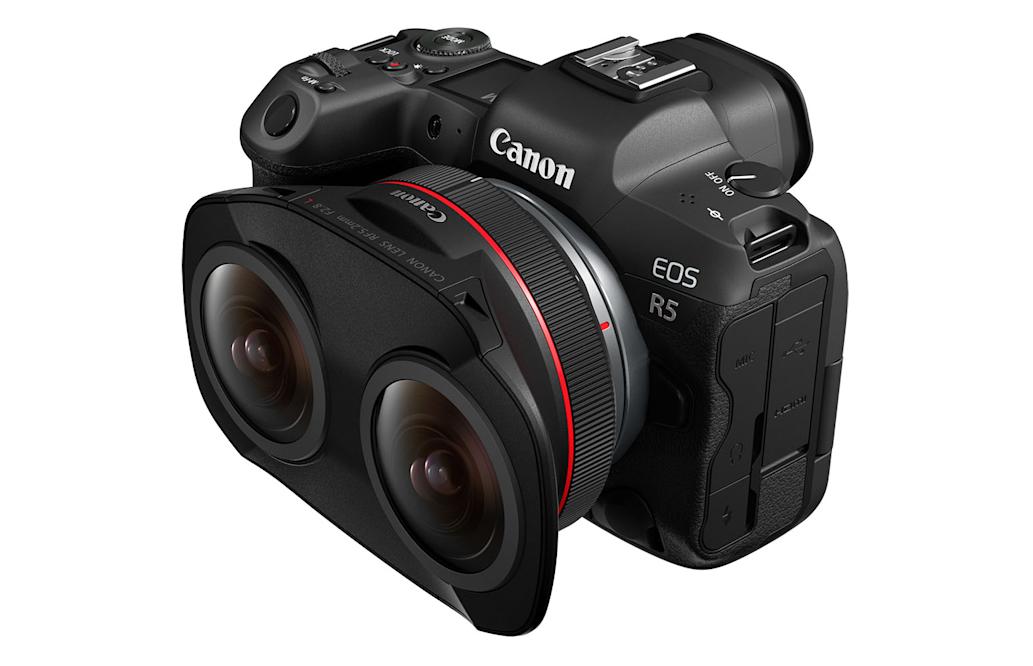Canon created a dual fisheye lens for its new VR video system
Canon has made a surprising product announcement, revealing a dual lens, RF Mount Fisheye which is part of the all-new system called EOS VR. The aim is not less than changing the reality of virtual (VR) and augmented reality (AR) production by making workflow simpler than the current VR capture system, while providing full quality mirrorless frame cameras.
The main product is $ 1,999 RF5.2mm F2.8 L Dual Fisheye lens specifically designed to install an EOS R5 camera capable of 8K Canon. This is a very unusual product, for the least, with two prominent fisheye lenses installed side by side. They are placed around 60mm (24 inches) separate to match the distance between Humans and provide a convenient parallax for VR and AR.
The lens only works with Canon’s EOS R5, selected for its 8K video capabilities. When shooting, he projected two circular images to a 45 megapixel camera sensor. It supports the arrest of 190 degrees, allowing delivery of 3D stereoscopic recordings of 180 degrees to 8,192 x 4,096 (8k) resolution for AR or VR applications.
The lens has some unusual features, such as a ring that focuses both lenses and allen screw adjustments that allow you to tweak the focus of one lens to offer another. Otherwise, you get a feature that is usually found in a high-end Canon glass, such as coatings to control flares and ghosting, dust and waterproof sealing and solid F2.8 aperture range. Even though it looks strange, the lens is quite compact and not bigger than the 35mm f1.8 canon lens.
Lens is just one part of the equation. Canon works on firmware updates for R5 with new features to support the lens system and EOS VR. It includes the mounting MF and the manual focus confirms through the Canon double pixel autofocus system, along with the UI “magic window” that helps users plan shipping to various types of headsets.
In addition, Canon makes the EOS VR utility and the EOS VR plugin application, each available by subscribing to $ 5 per month (with a free trial period). The VR Utility application reverses the remaining stereo images to correct and change it from the round to the “equilibrium” square image that can be seen in the VR headset. It also offers a fast editing tool such as cutting clips and LUT applications, letting you change to the specified resolution and file type (DPX, pro res, H264, etc.) before exporting.


Leave a Reply